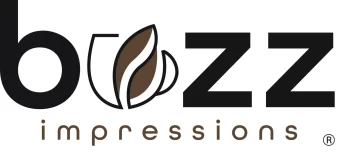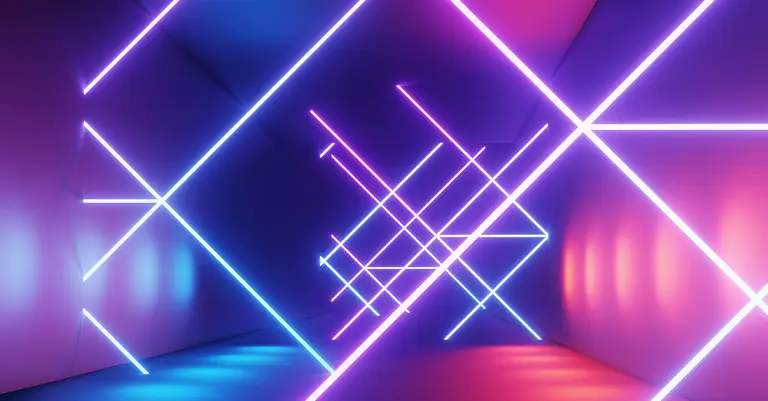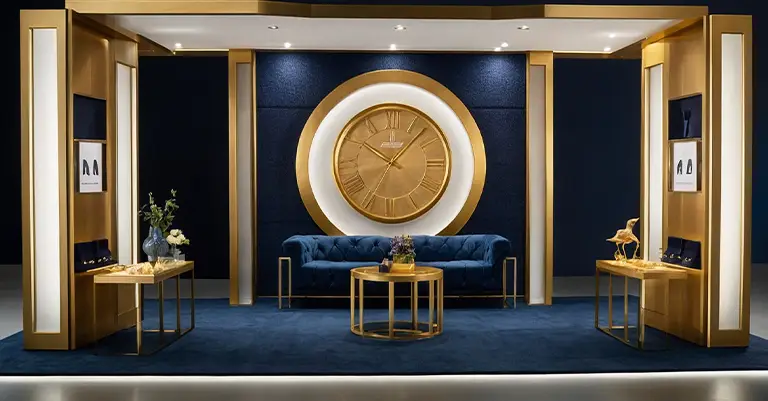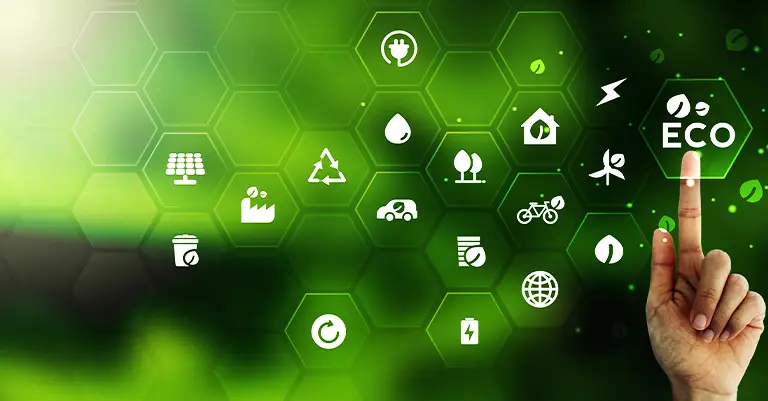An effectively lit trade show exhibit stands out and attracts attendees as effectively as a nautical siren lures in nearby sailors. Trade show lighting used to cost a small fortune and was only available to larger exhibitors with equally large budgets. In the past, halogens that cast an eerie yellow glow and were scorching hot to the touch dominated the trade show floor. However, the rapid increase of inexpensive, long-lasting, and cool-running LEDs has made trade show lighting an option for just about everyone.
Today, many marketers believe that in-booth lighting is of lesser value than exhibitry, graphics, and effective messaging. However, the reality is that the way you light up your display contributes to your overall presence. Furthermore, it both implicitly and explicitly conveys a lot of information about your brand. When it comes to your lighting options, here are a few dos and don’ts that apply to both logistics and marketing.
Don’t Use Halogens for Your Trade Show Lighting
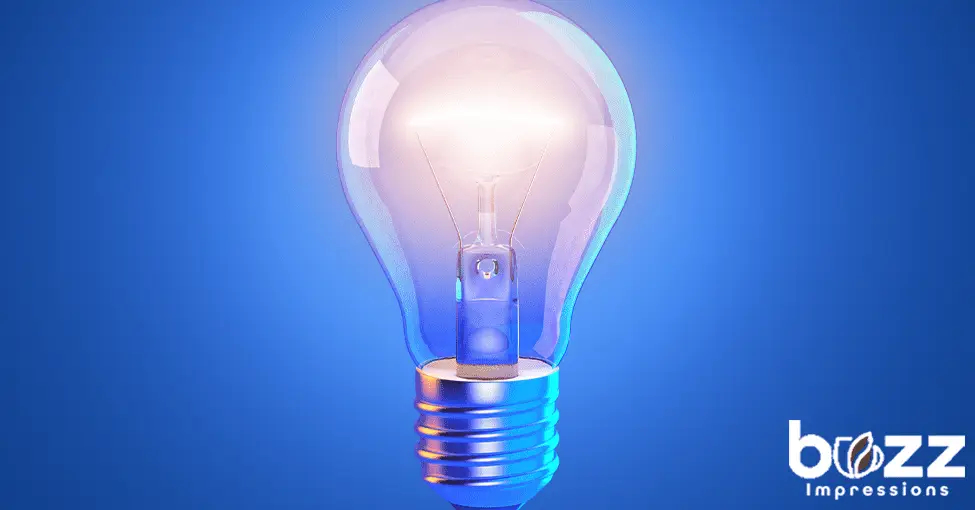
Most of you will scratch your head when you see the word “halogens.” However, it is not unusual to encounter older exhibits with these outdated lighting fixtures. For a multitude of reasons, LEDs are the better option. They’re safer, less expensive, don’t generate heat, and are up to 85% more energy efficient than their halogen counterparts. Furthermore, most convention centers prohibit halogen lights. When it comes to disposal, halogens typically end up in the trash. However, some local recycling programs do accept them.
Do Understand Lumens
A lumen is the measure of the total quantity of visible light produced by a source per unit of time. A watt, on the other hand, is a measure of power. More efficient lights produce more brightness and require less wattage. This means you’re going to get more light from an LED than you would with a halogen or incandescent bulb with the same number of watts. The brightness depends on the manufacturer, but for the most part, an 8-12-watt LED will deliver around 800 lumens, which is the same as a 60-watt incandescent.
Whatever you do, don’t waste your budget on puck lights. Many exhibitors try to add accent illumination with these palm-sized lights. However, battery-operated puck lights from the big box stores aren’t bright enough to be seen from the show floor. In certain cases, puck lights will work in small, shallow displays, such as those showcasing jewelry and other reflective objects that don’t require much illumination to shine.
Do Pay Attention to the Light Temperature of Your LEDs

Similar to how white paint comes in a variety of shades, so too does light. There are two major kinds of light, “warm” and “cool” tones. Trade show lighting hues are measured using the Kelvin scale, which measures illumination based on its resemblance to natural sunlight. The higher the number, the more the LED light resembles natural sunlight on a clear day. Warm light (2,000-3,000K) tends to exhibit a yellow undertone, while cool light with a higher rating (4,600-6,500K) has a blue undertone. Neutral white light falls between 3,100K and 4,500K.
Cool lighting tends to pop more on the show floor and provides a more vibrant and modern feel. On the other hand, warm lighting provides a cozy feeling. Your trade show lighting selection depends heavily on your brand positioning and the overall vibe you want to create. For instance, it would feel weird to step into a cutting-edge technology display that is lit like a cabin in the woods.
Once you set the tone, make note of the light temperature to ensure that future additions, purchases, and replacements are consistent. You don’t want to be that one exhibit where one set of LED lights casts a different color than the rest of the display. This happens when someone replaces a dead bulb with a fresh one with a higher or lower Kelvin rating. You can avoid this by recording the temperature of your exhibit’s lighting and sticking as close to this number when replacing dead bulbs. A booth illuminated with a splattering of different lighting colors just looks sloppy.
Don’t Forget Trade Show Lighting Wire Management
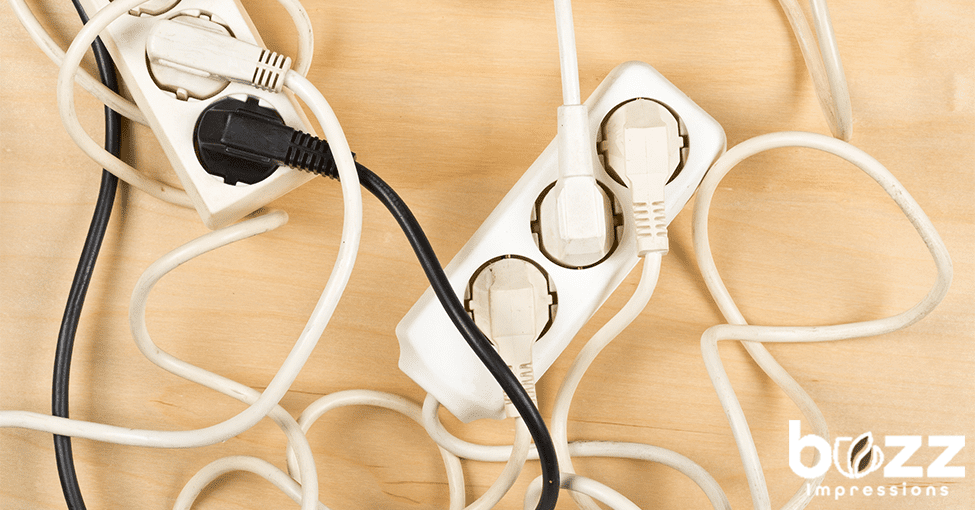
Wire management is critical for both aesthetic and safety reasons. It’s essential to create a wire-management system that safely tucks your cables under your exhibit’s flooring. You can also thread your wires through the frames of your exhibit, or run them along the base of the walls. If you want to install lighting features in certain exhibits, such as a reception desk or an aisle-side display, you may need to drill an opening in the slab or put a “mouse hole” in the bottom of the display so that you can route your power cords.
If you’re renting a booth, make sure you check with the owner before drilling. Most suppliers will ask about your needs and will predrill holes before shipping the booth in most cases. If you don’t clear this matter up before drilling, you may end up having to purchase the display. You also want to ensure that your installation-and-dismantle crew knows whether you own or rent your booth before they make executive decisions about where to use their power tools.
Do Consider Uplights to Avoid Busting Your Budget
Most people think of overhead lighting before any other style of lighting when it comes to trade show lighting. However, lighting your display from the floor up is an effective and low-cost option. This is especially true when your budget takes a major hit the moment you introduce any type of rigging. So, you should consider using uplights on the floor to cast a “light wash” over the walls of your exhibit. Colored lights can be an easy (and inexpensive) way to alter the entire look of your booth. This can be a great way to reference certain events, such as:
- cause-marketing campaigns (e.g. pink lights for breast cancer awareness)
- holidays (e.g. red and green for Christmas)
- marketing messages (e.g. green lights for an eco-friendly product)
Don’t Be Careless with Your Trade Show Lighting
Trade show lights tend to be fragile. Before a show, the last thing you want to do is to drive around looking for a replacement bulb. While it’s definitely easier to put everything in a big storage container and ship it out, chances are that some of your gear will arrive damaged. Instead, you should pack your arm lights in individual boxes – ideally in the original packaging if possible. Rolls of LED tape should be wrapped in foam padding. Lastly, you need to protect the tape that has already been affixed to your exhibit. You should also consider packing any transformers, remote controls, and extra LED bulbs in individual containers.
Do Keep Your Lighting Within the Bounds of Your Exhibit
The International Association of Events and Exhibitions (IAEE) guidelines state that your entire exhibit must reside within your actual booth space. Each show will have its own rules regarding height restrictions. If a show limits in-line booth walls to a height of 8 feet, the large light on top of your 8-foot-tall back wall will violate the rules of the event. The same applies to aisles. Uplights along the aisle carpet or arm lights that extend past your booth space are both major no-nos.
Don’t Just Stick Lights Anywhere
Consider the placement of your lights carefully and evaluate which areas of the booth truly need it. Almost any sort of lighting is better than none, but be strategic. You definitely want to highlight your logos and any key features of the exhibit. Adding a line of arm lights to a non-essential wall just shifts the focus to your underwhelming graphics. Take a step back and ask yourself, “what is it that I want to highlight?” Those are the elements of the exhibit that you want to highlight.
